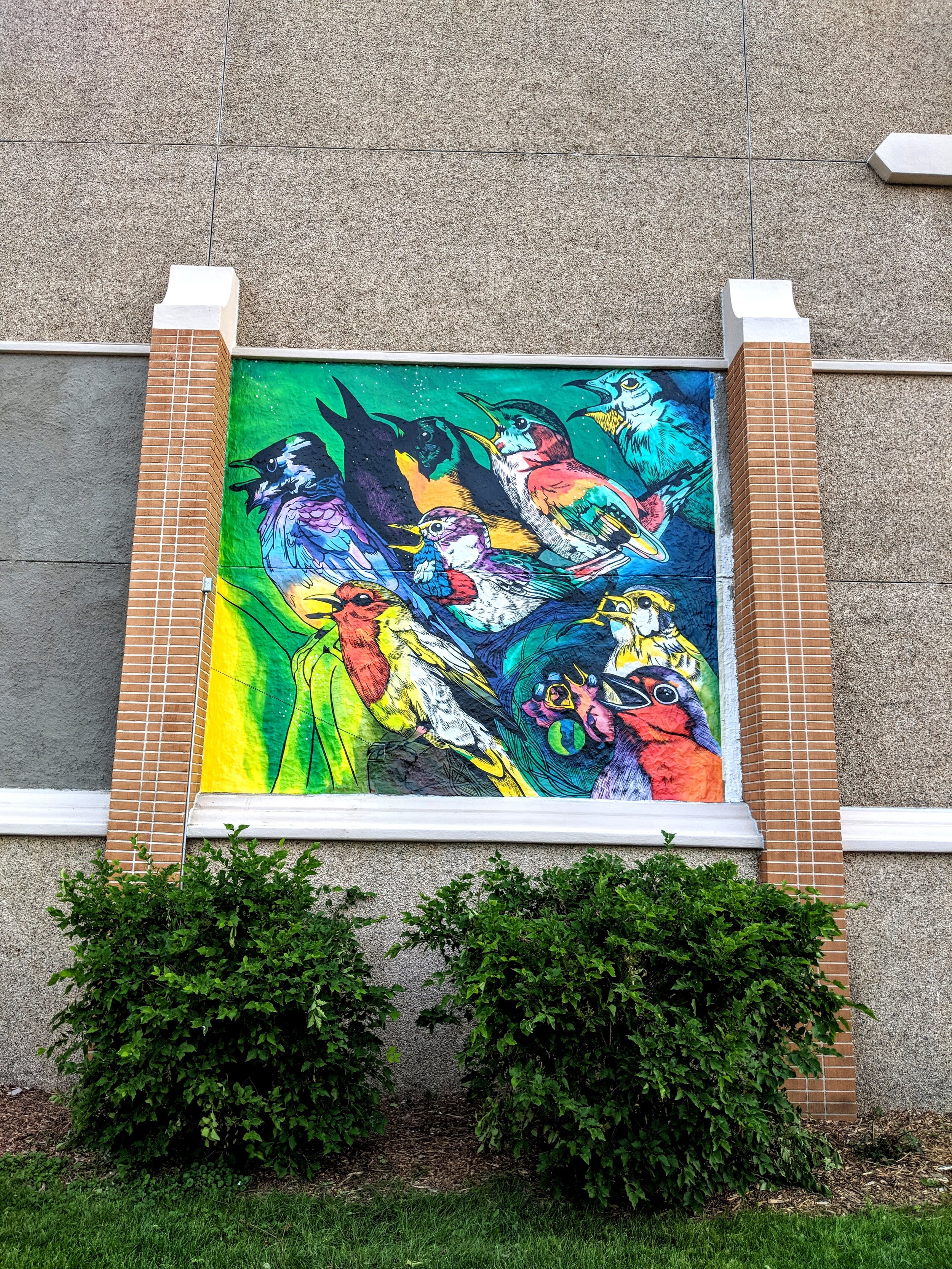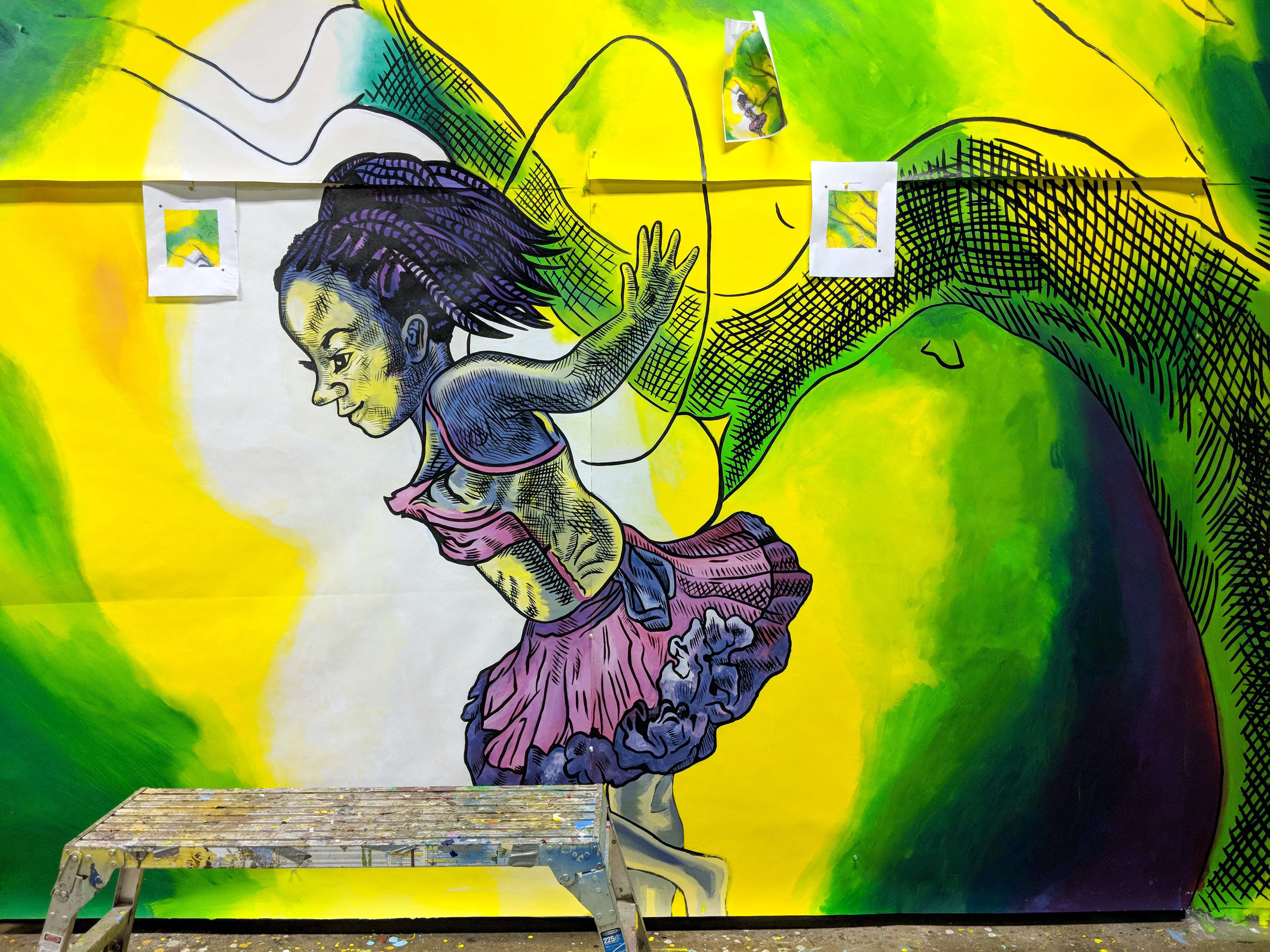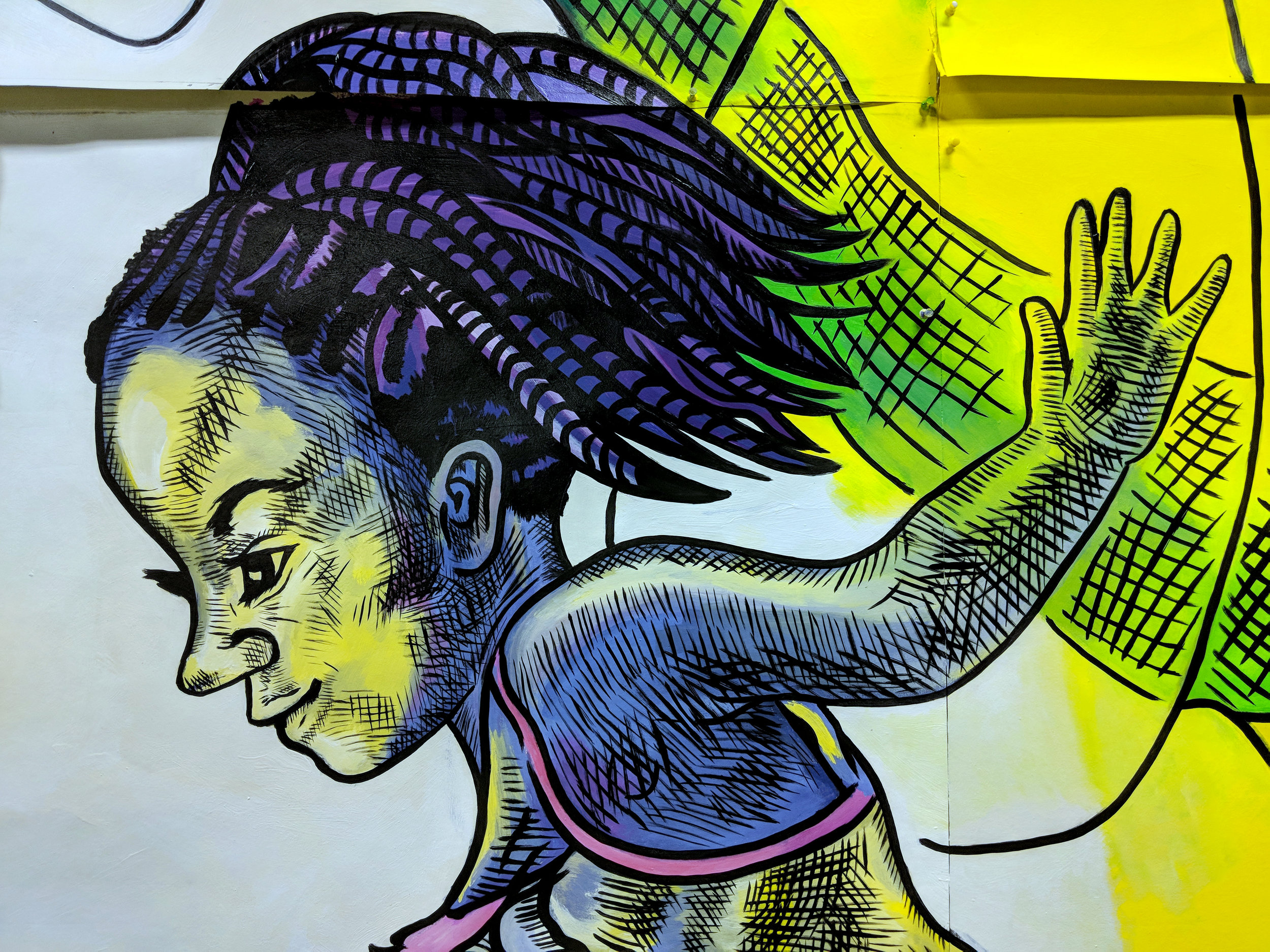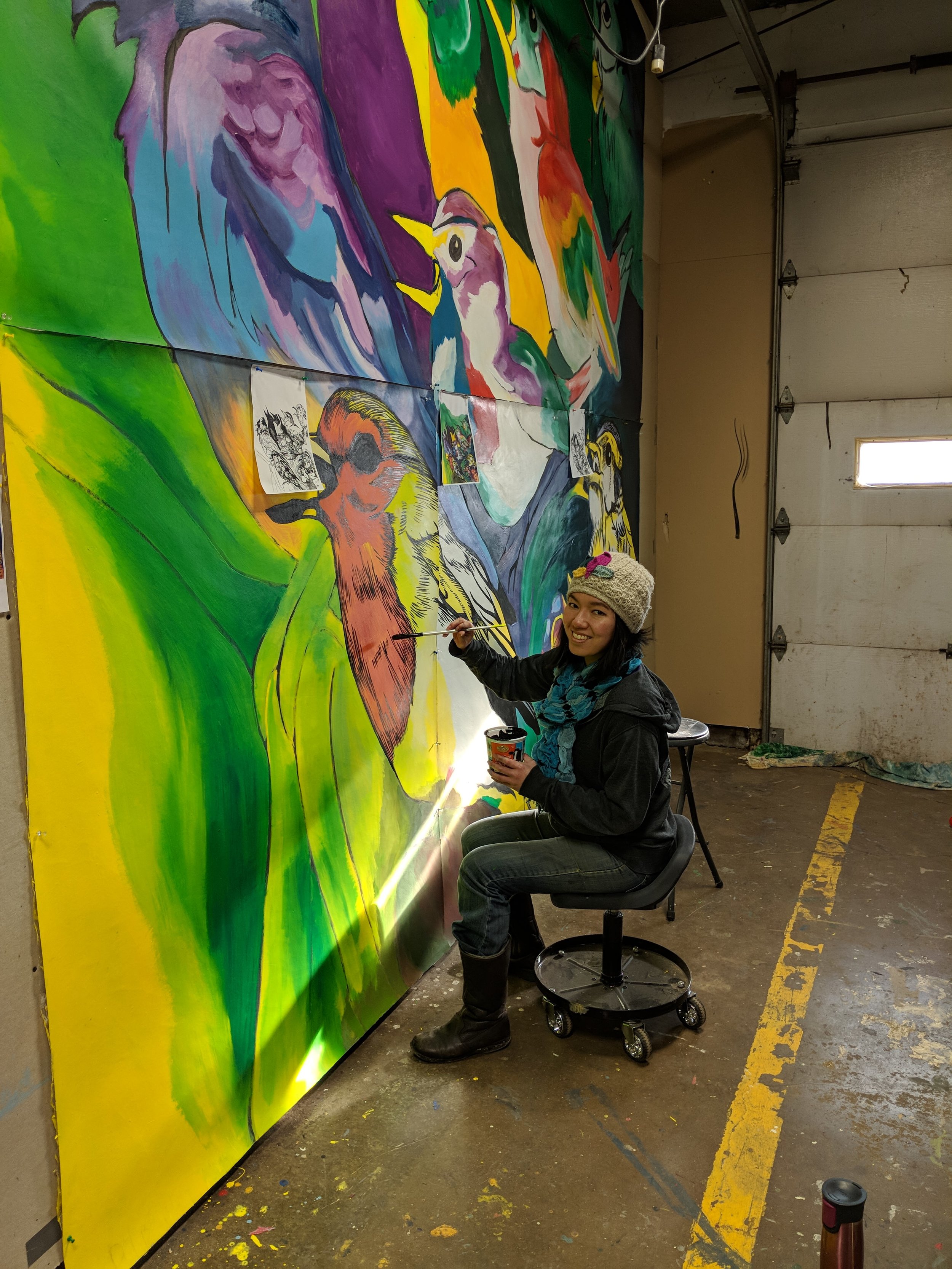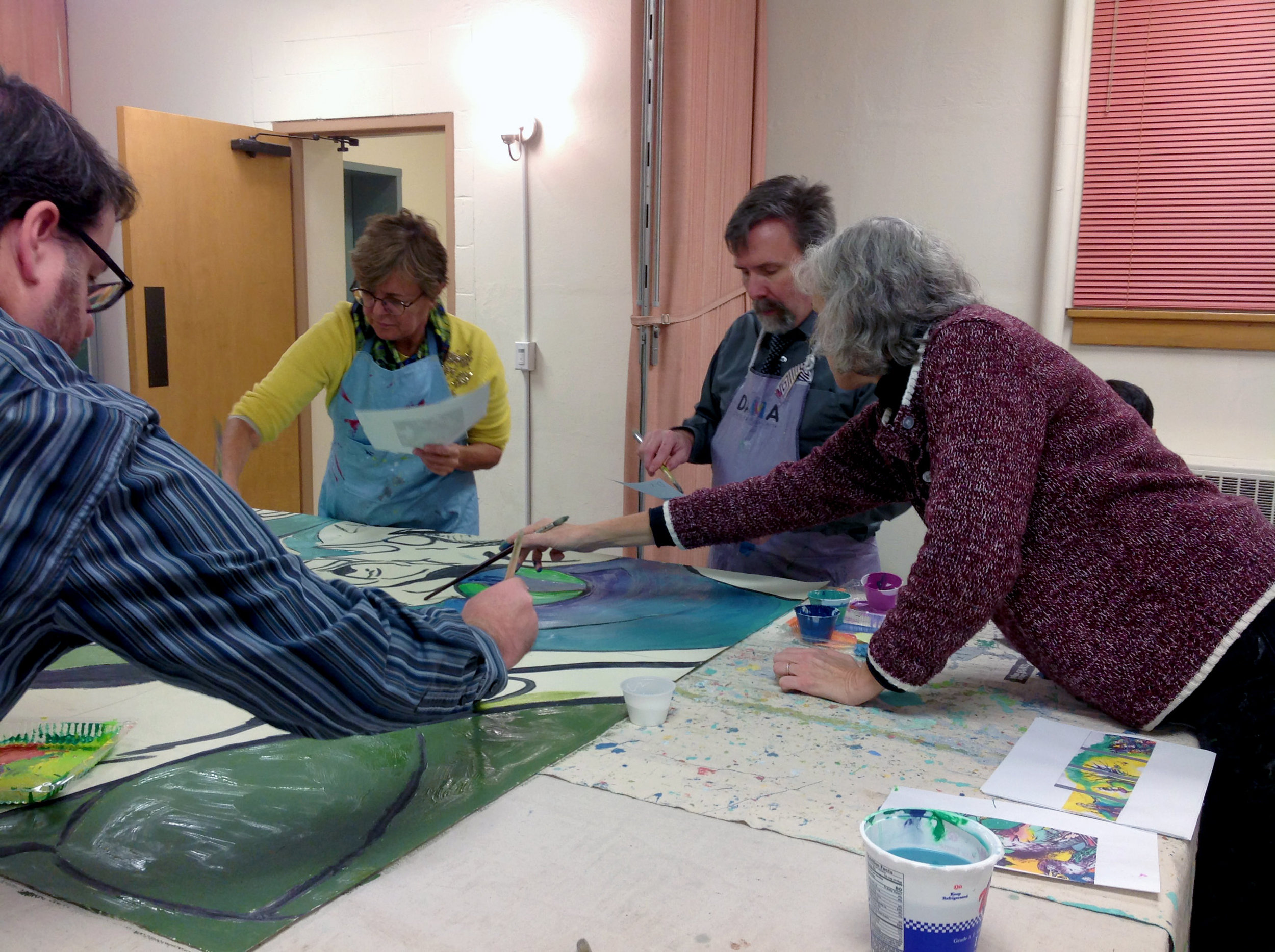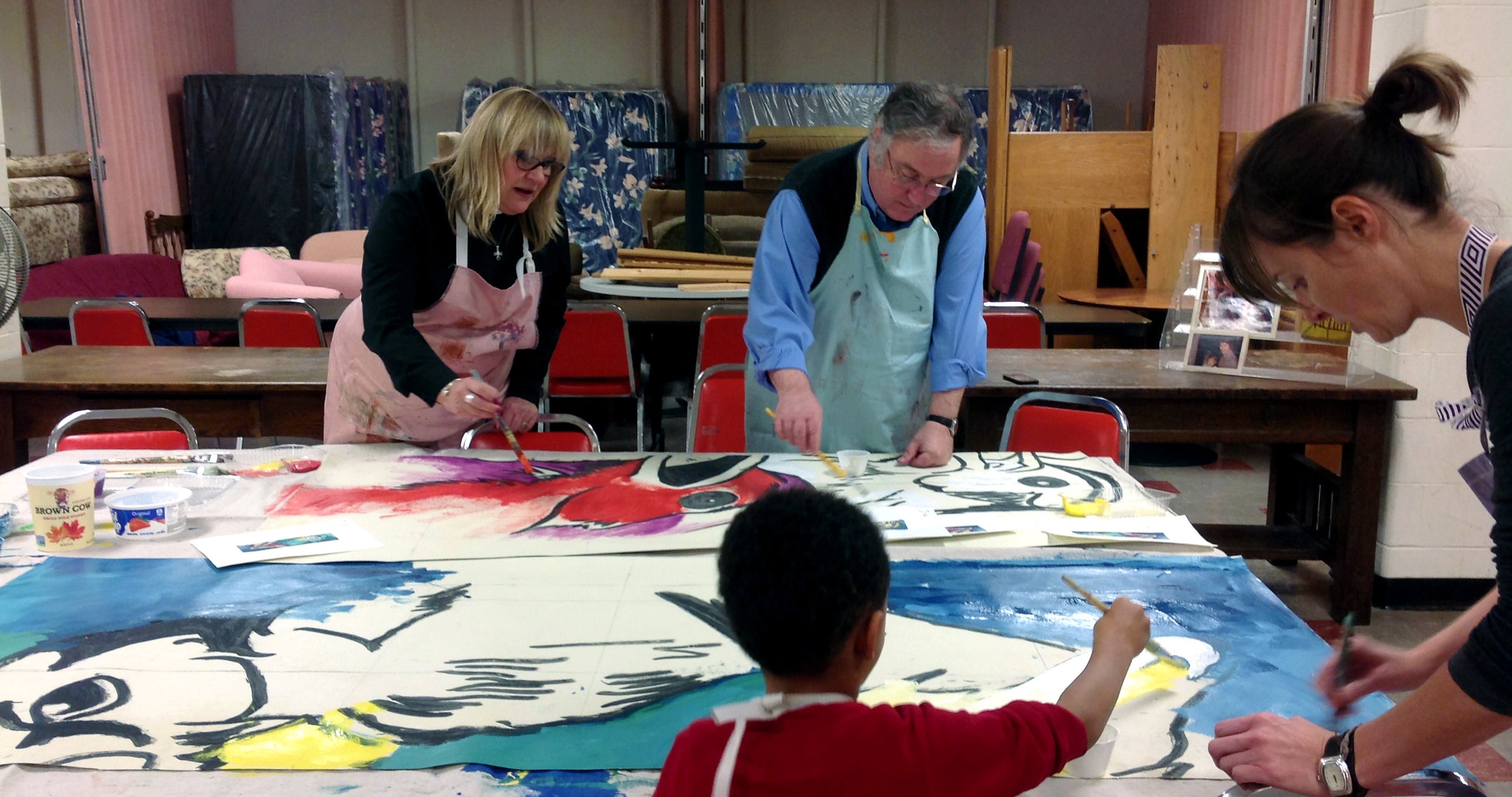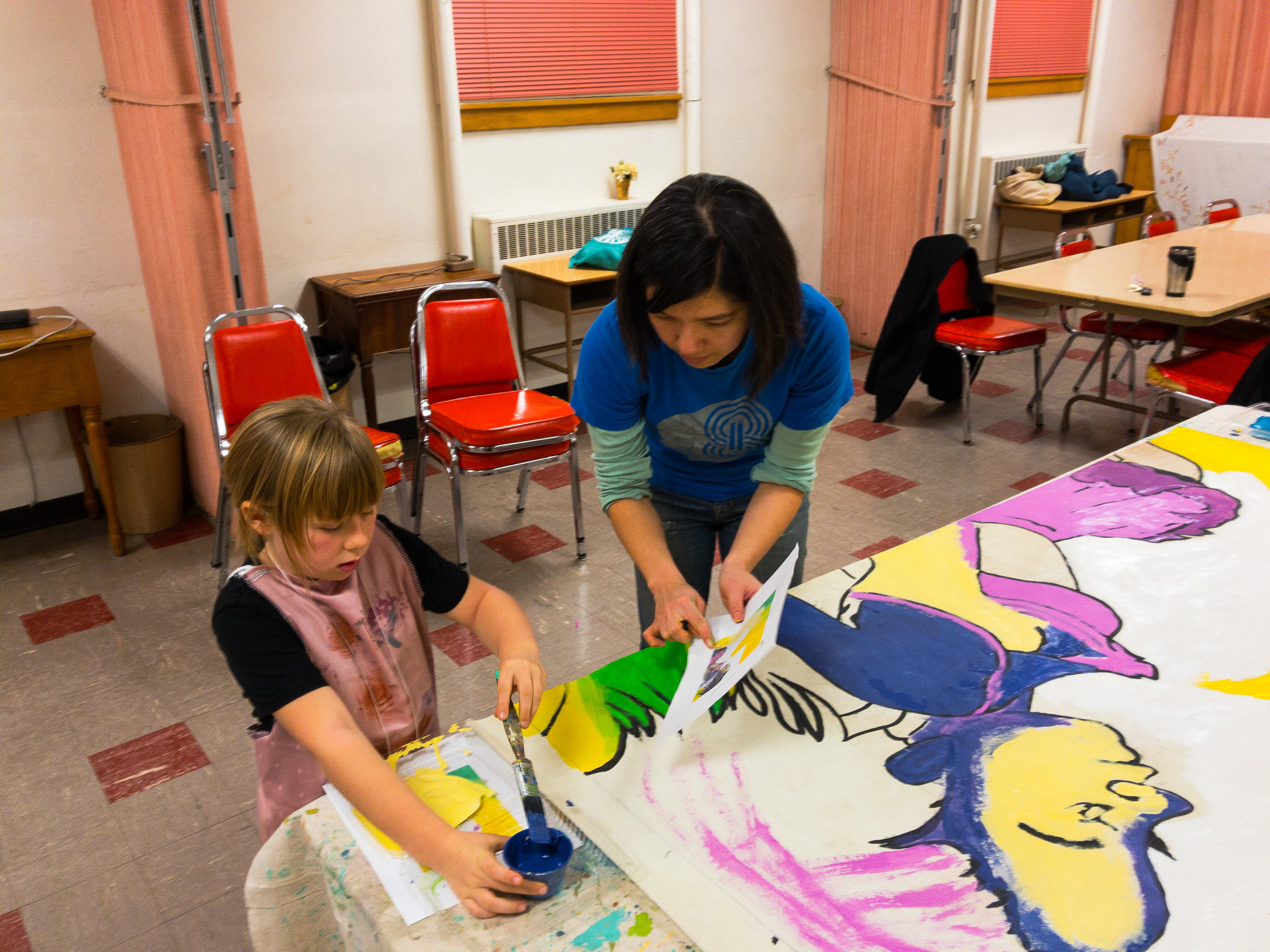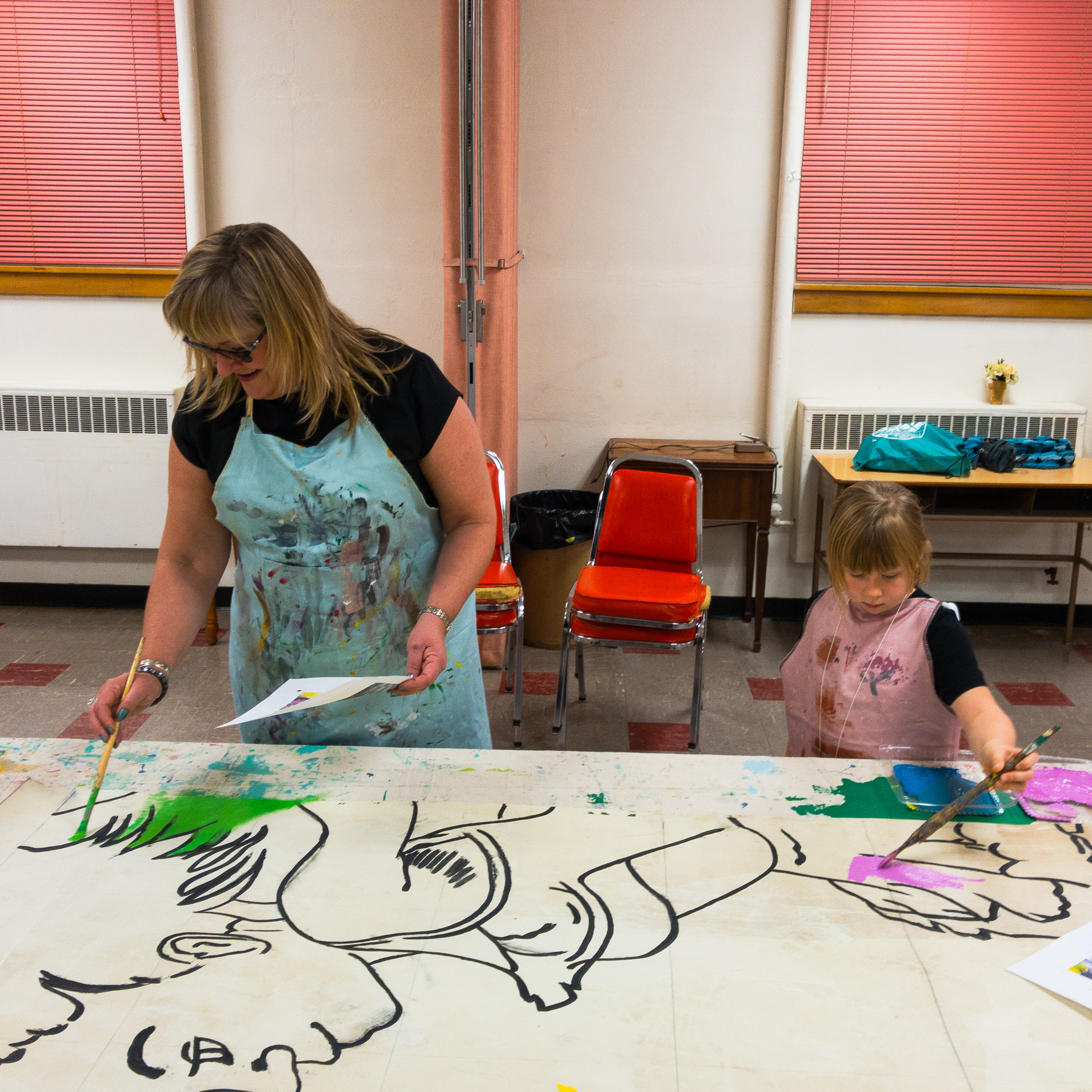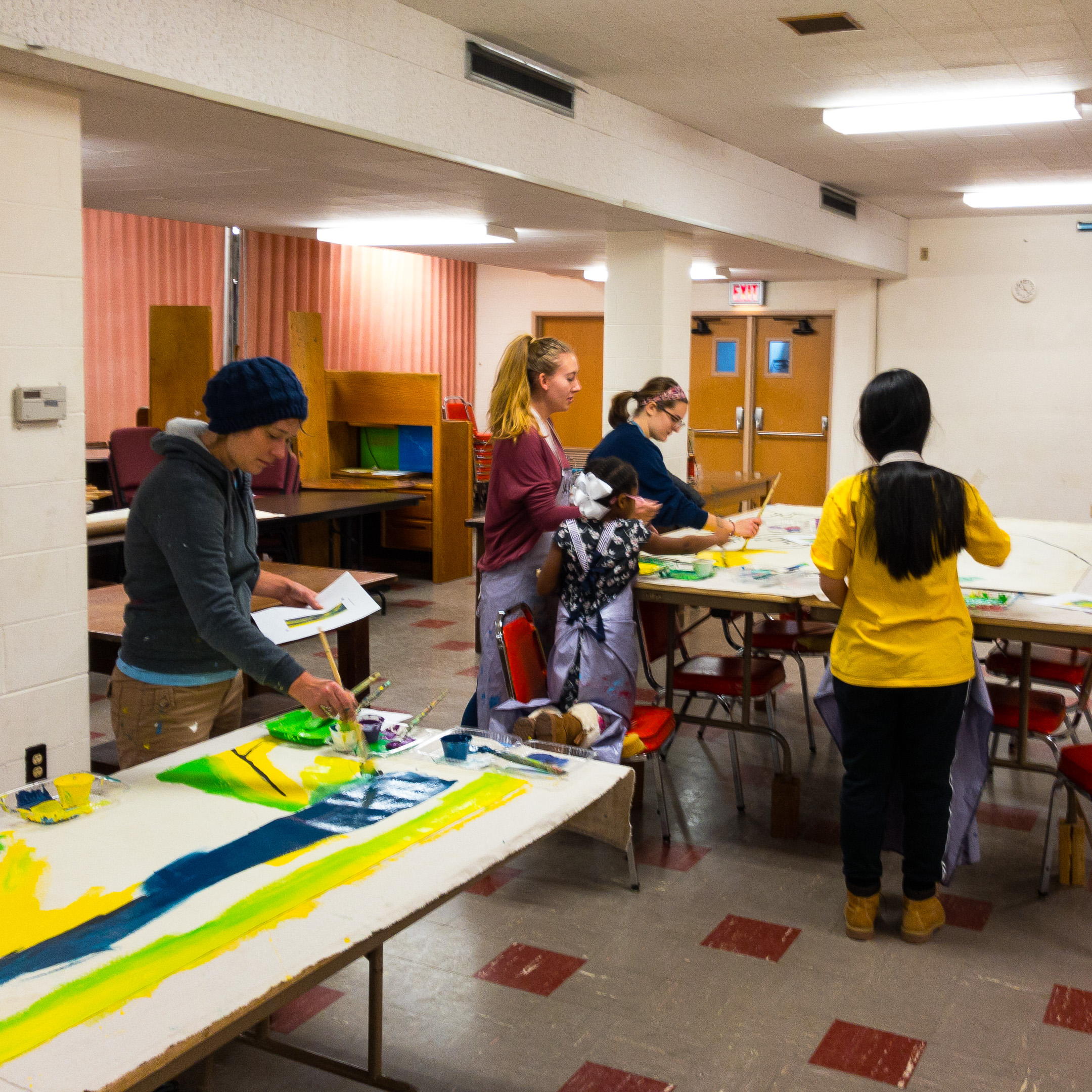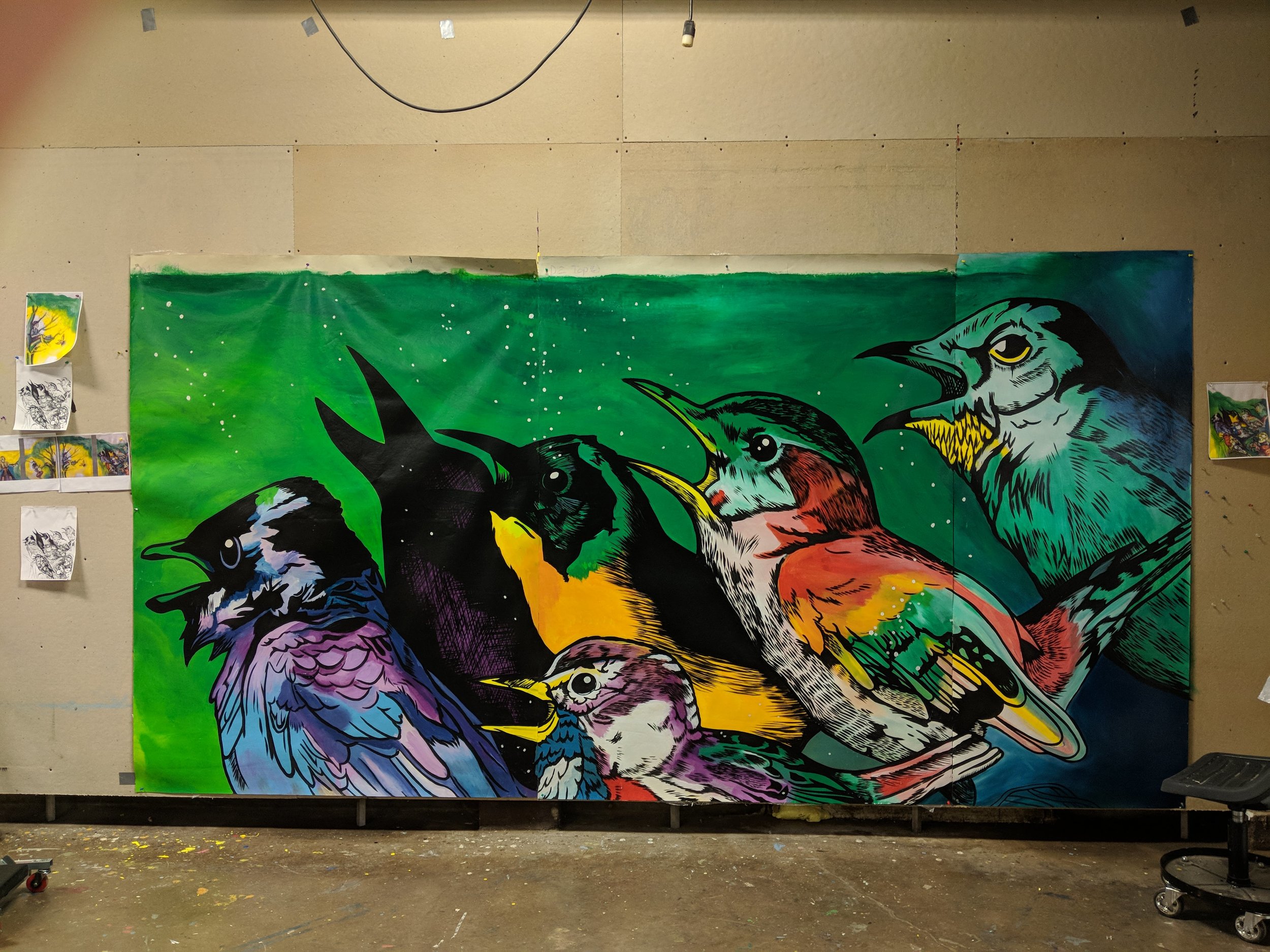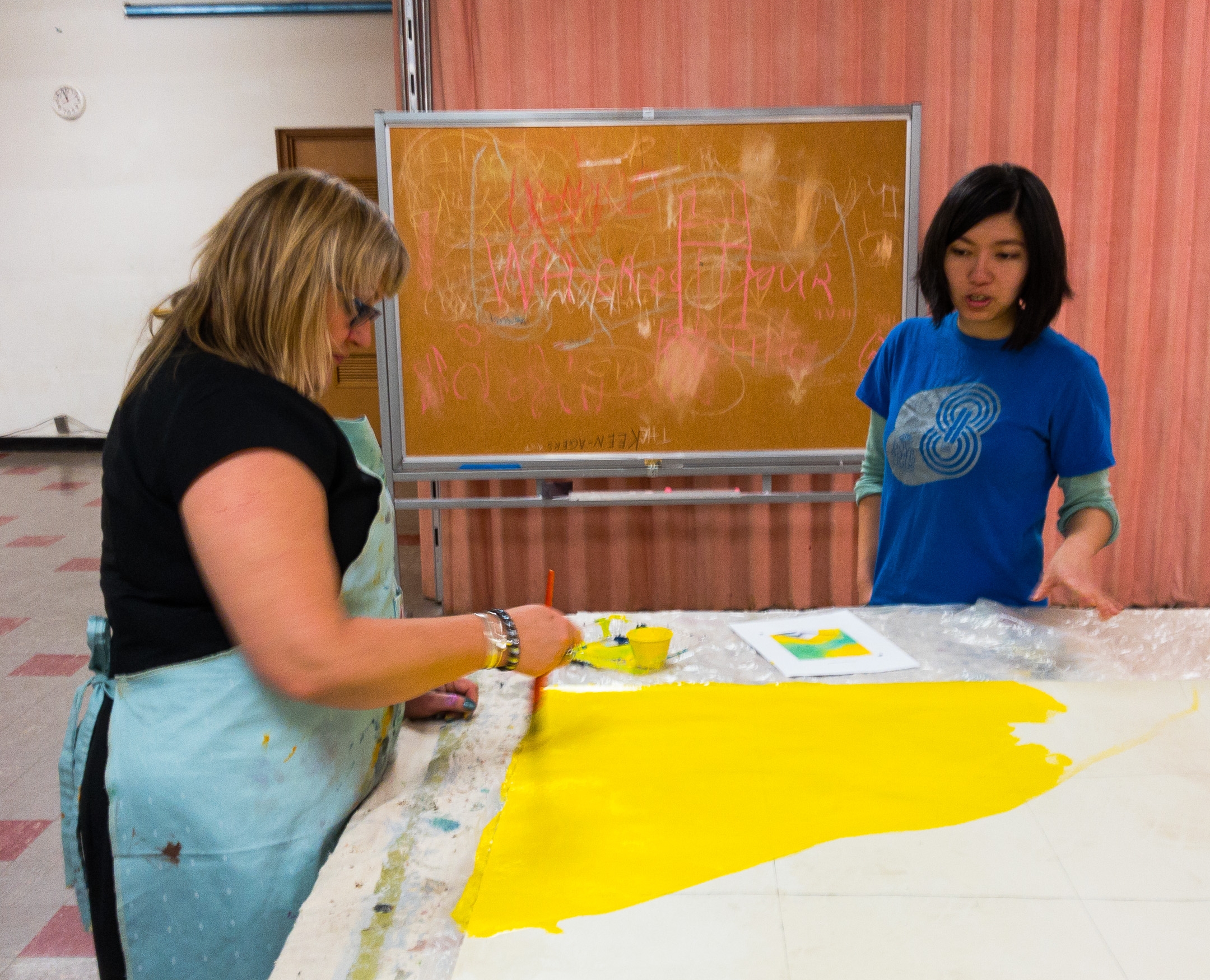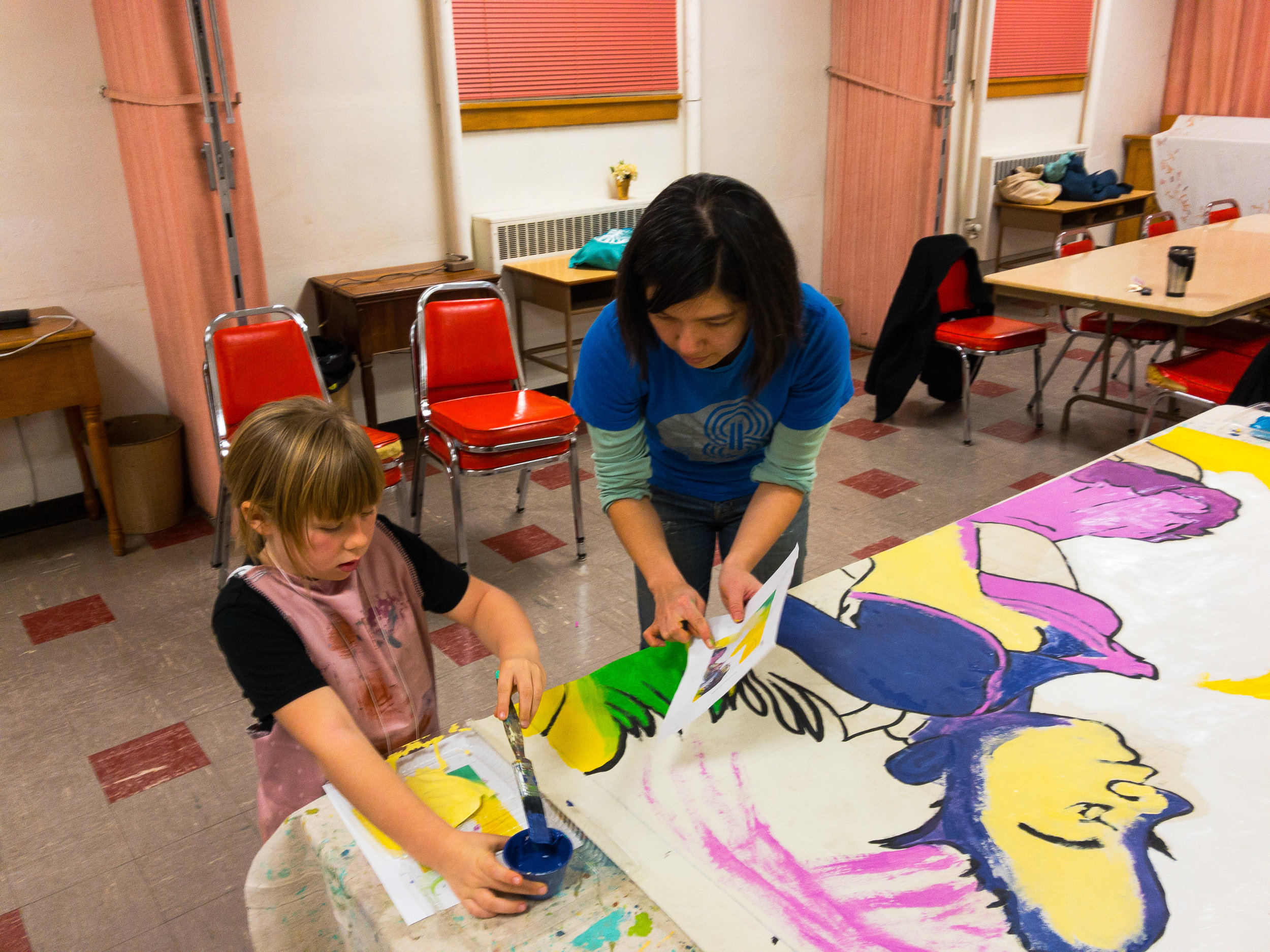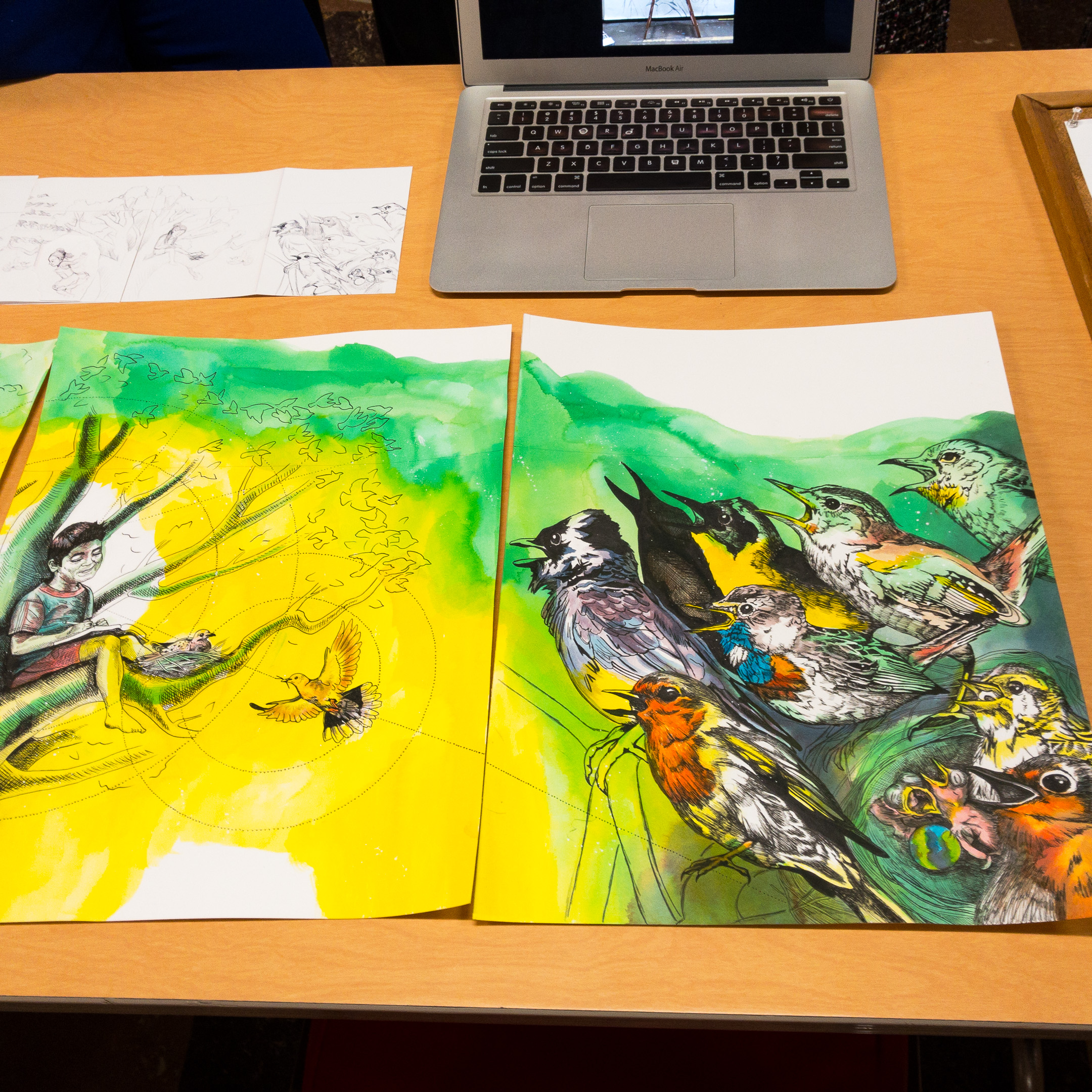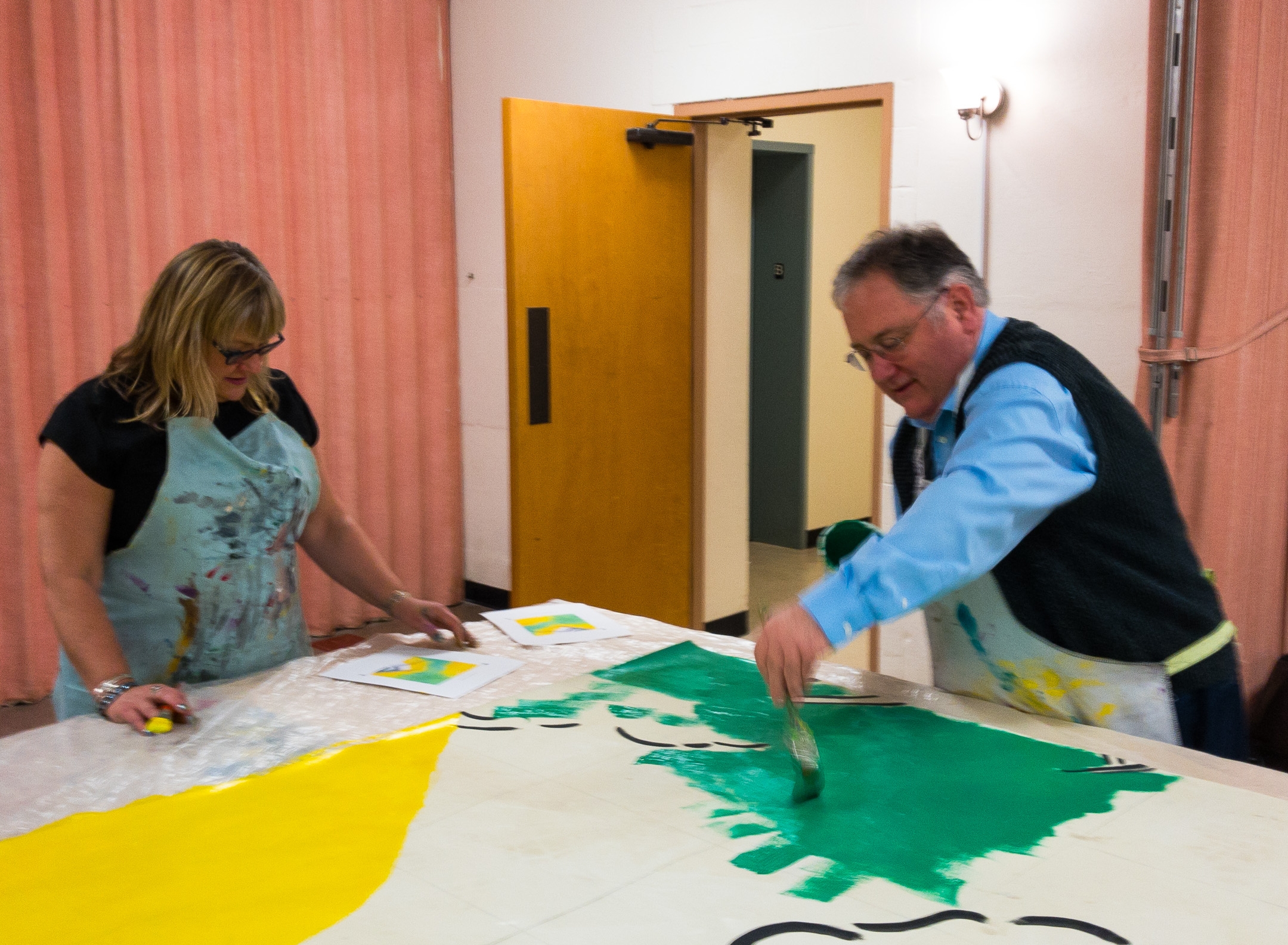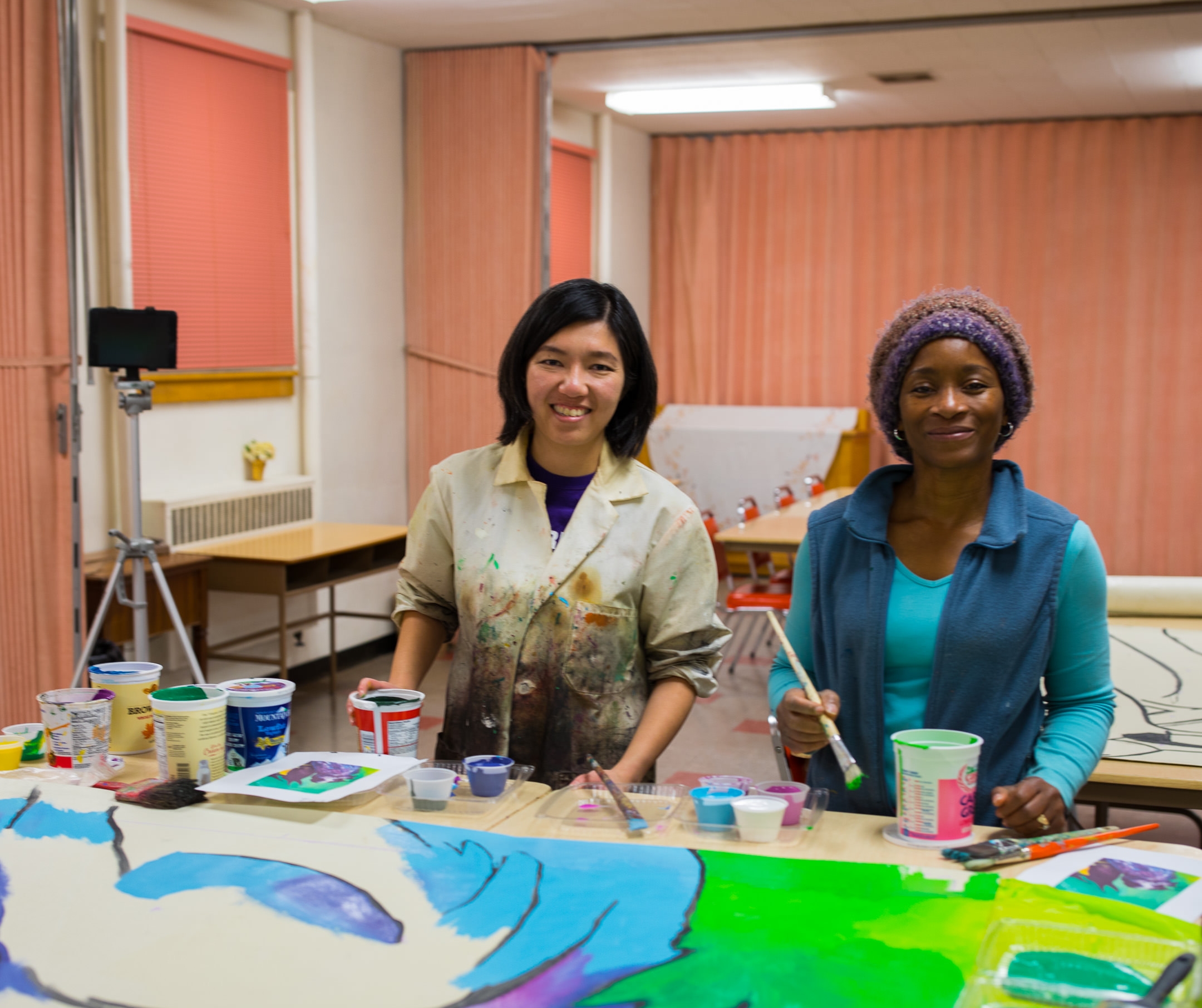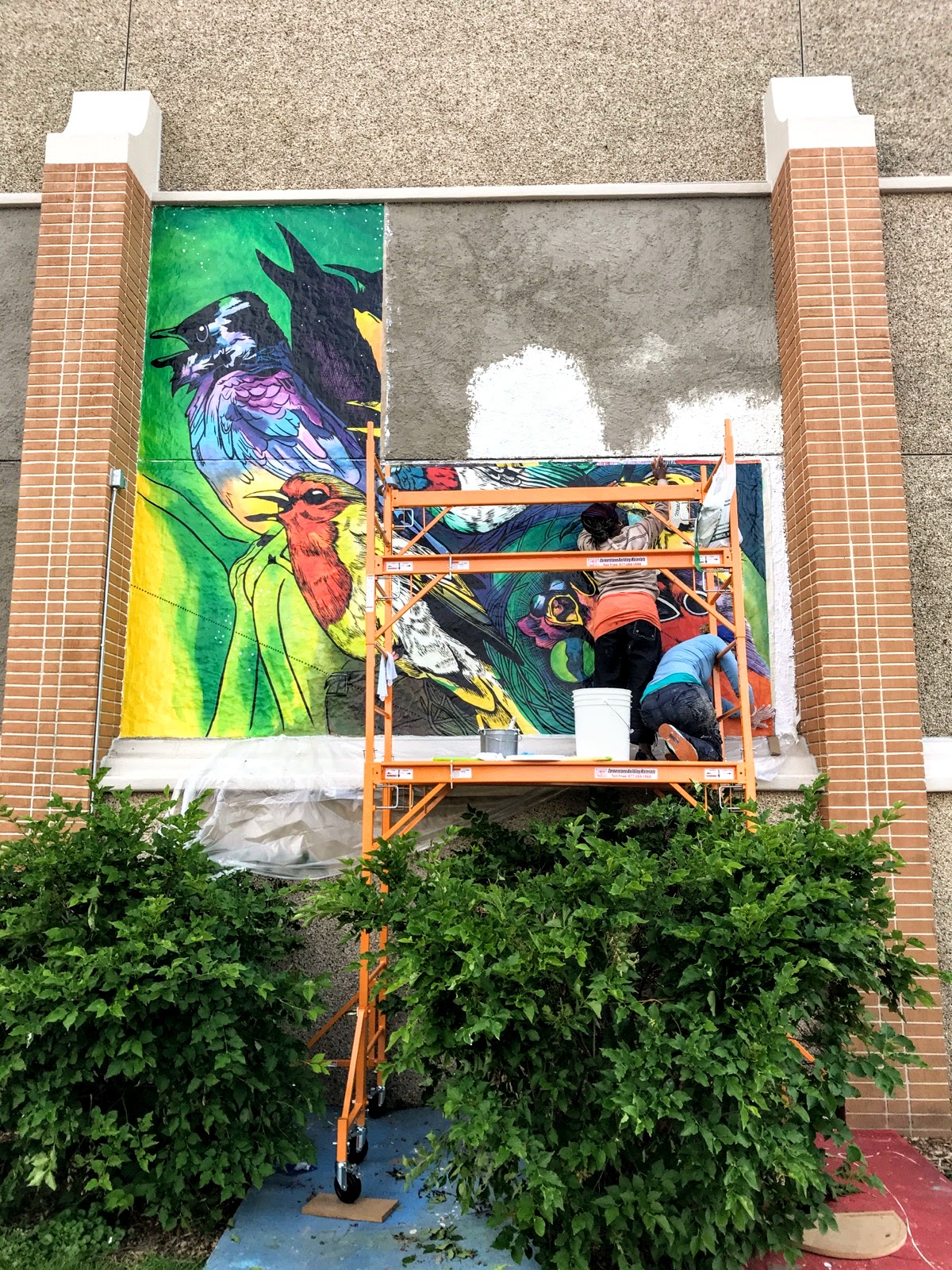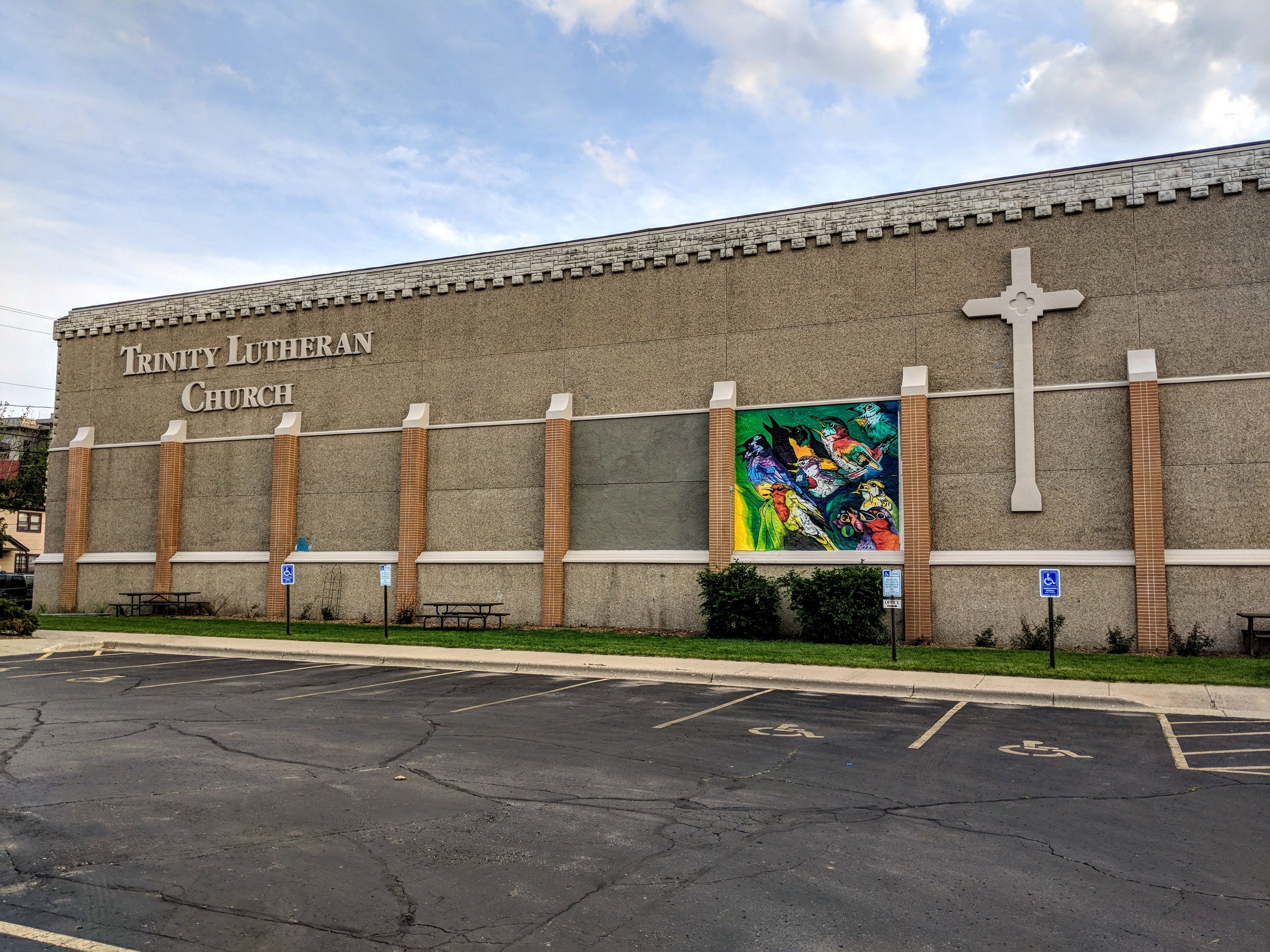Since summer 2017, I have been working as the lead artist on a mural project for Trinity Lutheran ChurchChurch. With the installation happening in summer 2018, this project with Dane Arts Mural Arts exemplifies just how much it takes to bring a public and community project to life. Many hands helped paint this mural. Many voices contributed to the story and ideals it represents.
I spent the summer getting to know the congregation through community interviews. Trinity wanted a mural that represented a "Journey to a New Beginning." The concept honors their heritage and ever-evolving community, the importance of pilgrimage in faith and human history, and the church's stance with LGBTQ+, refugees, and commitment to activism and inclusion.
Design for the Community
I love conducting community interviews. They give me a chance to learn about the people that I'm designing for and what's important to them. As an artist who does a lot of work with schools and as a part of social causes, I am also constantly thinking about the roles of beliefs (religious, political, and otherwise) in the shaping of the societies we live in. Art easily becomes a platform to discuss what matters to us with our peers. It becomes a chance to meet our challenges--and choose how to overcome them. It becomes an opportunity to negotiate and connect with other people over who we are as a society--and whom we want to be.
For the Trinity project, I spoke with a church member who became ordained when women were finally allowed to join the ministry. She told me about being involved in the rewriting of the scriptures to no longer refer to God as Father or "he/him/his." She and other congregation members talked about the challenges that come with necessary change, and also about the core of spirituality that remains important in the midst of the debates of what the practice of that spirituality should look like.
Almost everyone I met with talked about the music and the choir being central to the church. Long-timers and new members alike said they chose this church because it felt like home. When I asked what they wanted their neighbors to know about them, they emphasized their commitment to activism and to inclusion, and opening their space to the community to do social good regardless of the religious affiliation of their community members.
Creating the Design
Following the interviews, I focused on imagery that held religious significance and also reached beyond to community citizenry, activism, and stewardship.
The people in the mural represent the people in the congregation, including the children who dance in the aisle during Sunday service. "We used to be a much stricter congregation," said a number of the older members of the church, some of whom have attended Trinity for as many as 70 years and tell stories from Sunday school and getting baptized there. "We're much more laid back now," they laugh.
The holy Trinity is alluded to throughout the imagery (three people, three concentric navigation forms, three doves), as the number three has recurred throughout different religions in human history. The Ash Tree, a long-standing Christian symbol, was also relevant in Norse mythology, as the Tree of Life that connected Earth with the After Life. This also connects Trinity’s mural to the church’s Norwegian heritage and founders. Finally, the mural design features a "choir of birds," which consists of Old and New World songbirds, some of which are known to migrate in mixed species flocks to form larger groups for protection. Music has been a fundamental part of Trinity and the Lutheran liturgy, and is perhaps the root of why this community values creativity so deeply.
Painting with Community and High School Students
We had more than 15 community paint days with Trinity Lutheran Church and members from the greater Madison community. SAIL East and Seed to Table students at Goodman Community Center, staff at Canopy Center, UW Service Learning students, and the Boy Scouts all had a hand in creating this mural.
There are too many remarkable things that can come out of a community paint session, but one in particular stands out. On one particular day at Goodman, one of the high school students chose to stay through all three of the scheduled painting sessions. Emida Roller and I were leading the sessions that day. As we painted, this student shared his interests and opinions with us, on music, community, and more. He talked about his favorite subjects and things he struggled with. It was only towards the end of the day, as we were cleaning up, that multiple staff members approached Emida and me and told us that this student had effectively been a mute for the entire school year. “He just comes to school, puts his head down on his desk, and talks to no one. He does well on all his course work. But he won’t interact. This is the first time we’ve heard him speak in almost a year. It’s kind of a miracle.”
I made a point to talk with the student as we cleaned up and rolled up the mural panels. I asked him what it was like going to school there. “Everything’s too easy. There’s nothing to get excited about,” he said. “So you feel under-challenged?” I asked. He nodded. Then we got back to other conversations about music and the news.
Art, Community, and Politics
Religion, politics, and activism have always been powerful ways to organize people. Many people are uncomfortable with political discourse and would rather not "talk politics," especially in the places where they work, learn, play, and pray. I understand that, and I also believe it shouldn't be uncomfortable. Religion, politics, and activism are all vehicles for ideology and service towards our community. Religion asks us to reflect on our values and have faith in the camaraderie of our peers. Politics asks how we can best organize and utilize our resources across the community. Activism asks us to pay attention to the ways in which we are falling short, to serve the underserved, to see the unseen. They are separate, yet similar; connected, yet distinct. As a community, we need to become comfortable discussing all of them in order to best understand their benefits, know their boundaries, and acknowledge both the limits and potential of the human being.
As an artist and storyteller, I am honored to work with Trinity to help them share who they are with the neighborhood at large, as a house of faith and as an active community citizen. Art has the power to enrich the community and to help people congregate around shared beliefs and values. I hope that this mural may become a beacon of the community stewardship, diverse culture, openness, and creativity that make us who we are.
Written by Jenie Gao
